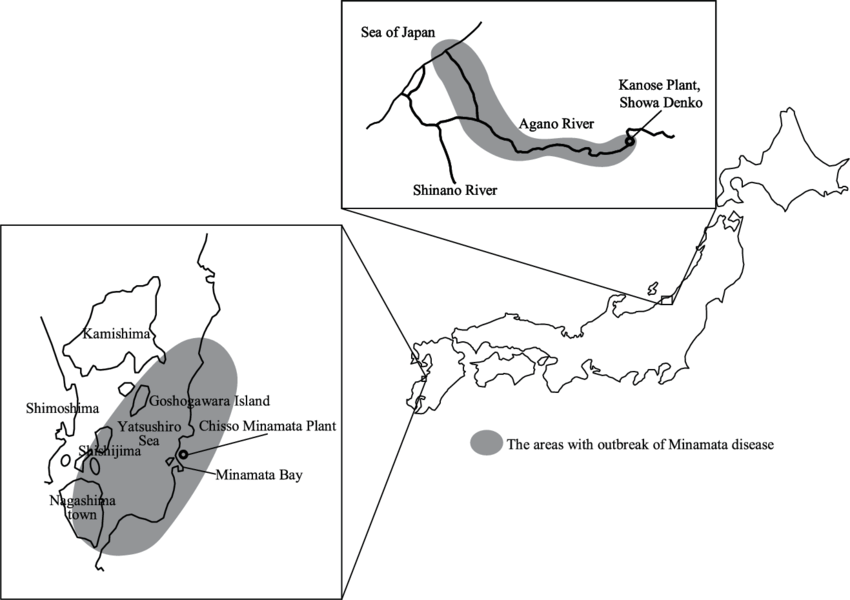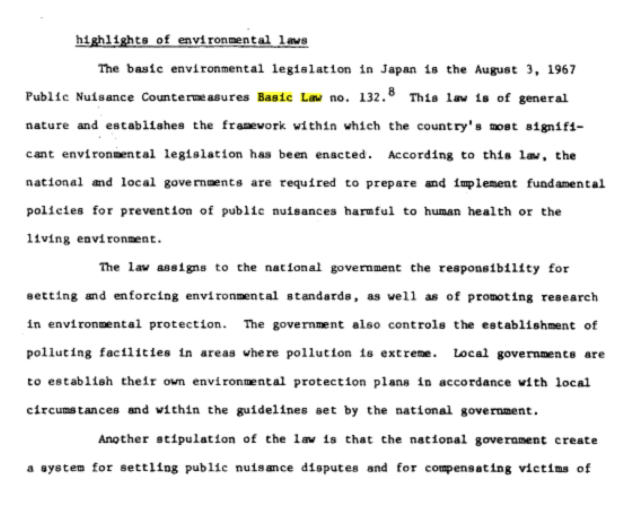In 1967, Japan enacted the Basic Law for Environmental Pollution Control, a culmination of debate over the management of Minamata disease and widespread air and water pollution.
Minamata’s Fight for Justice:
How Japan’s Failed Debate and Response Sparked
Local and Global Change
1960-1968
In the following “years of silence,” a second outbreak occurred in Niigata Prefecture in 1965 due to acetaldehyde production from Showa Denko’s Kanose factory along the Agano River.

Map highlighting locations of Minamata disease outbreaks, 2006, Environmental Health and Preventive Medicine


Report on Environmental Control in Japan, 1975, U.S. Environmental Protection Agency
"Minamata disease is a disease of the central nervous system caused by a methylmercury compound. The disease occurred in residents who ate large amounts of fish and shellfish contaminated by methylmercury compounds. Chisso Minamata factory polluted the environment by discharging factory drainage containing these compounds, which were formed as by-products in the acetaldehyde synthesizing process.”
~Statement by the Japanese Government, 1968, Minamata Disease Municipal Museum
Finally, in a 1968 statement addressing both outbreaks, the government officially declared Chisso to be responsible for the disease. The corporation halted acetaldehyde production.